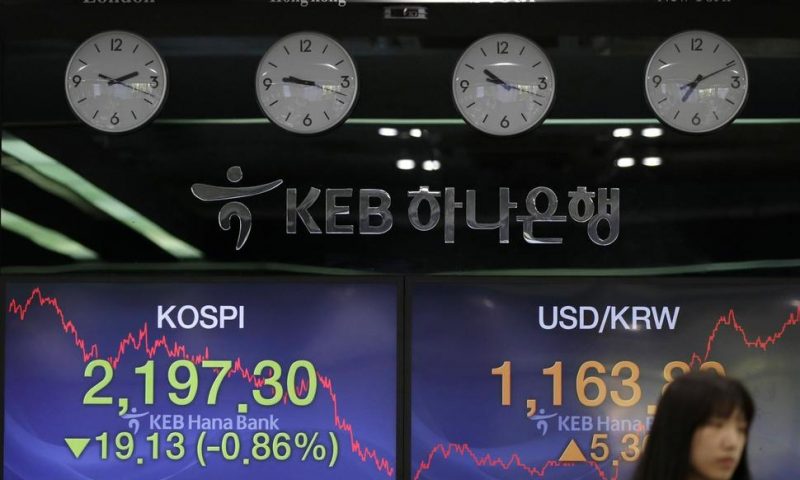Global stocks lower following Wall Street high after China factory activity weaker than expected.
BEIJING — Global stock markets were flat to lower Tuesday following Wall Street’s new high after Chinese factory activity was weaker than expected.
Benchmarks in Paris, Hong Kong and Sydney declined while London and Frankfurt were little-changed. Shanghai advanced. Japanese markets were closed for a holiday.
Monthly gauges of Chinese manufacturing from a business magazine and an industry group showed activity grew in April but more slowly than the March rate. That added to signs China’s economic downturn is bottoming out, but investors were disappointed the data weren’t better.
April data are a “pretty soggy picture,” Chris Weston of Pepperstone said in a report. “The data flow through Asia has reinforced the issue that if you want growth, you head Stateside.”
In early trading, France’s CAC 40 lost 0.3% to 5,566.04 and London’s FTSE 100 was off 2 points at 7,438.79. Germany’s DAX shed 0.2% to 12,305.37.
On Wall Street, futures for the Standard & Poor’s 500 index and the Dow Jones Industrial Average declined 0.1 percent.
On Monday, the S&P 500 index moved further into record territory after Commerce Department data indicated the U.S. economy is growing but not too fast.
Hong Kong’s Hang Seng lost 0.6% to 29,699.11 and Seoul’s Kospi declined 0.6% to 2,203.59.
The Shanghai Composite Index gained 0.5% to 3,078.34 while Sydney’s S&P-ASX 200 shed 0.5% to 6,441.82. India’s Sensex gave up 0.4% to 38,901.32.
Singapore declined while New Zealand, Taiwan and other Southeast Asian markets advanced.
In China, Caixin magazine’s purchasing managers’ index showed factory activity fell to 50.2 on a 100-point scale from March’s 50.8. A separate index by the China Federation of Logistics & Purchasing declined 0.4 points to 50.1, just above the 50-point line that indicates activity is accelerating.
That suggests some of March’s improvement was due to the rebound from the Lunar New Year holiday, when factories close for up to two weeks, said Bill Adams of PNC Financial Services Group. But he noted it was the second-strongest reading since October.
“The worst of China’s slowdown in late 2018 and early 2019 is over,” said Adams in a report.
The S&P 500 edged up 0.1% on Monday while the Dow rose less than 0.1%. The Nasdaq composite gained 0.2%.
Big gains for banks led the way on hopes for bigger profits from making loans, but losses for high dividend stocks held indexes in check.
Both the S&P 500 and Nasdaq closed at record highs.
A Commerce Department report showed the economy is growing but not too fast.
Consumer spending jumped 0.9% in March, the biggest gain in nearly a decade. But the same report also showed that the Federal Reserve’s preferred measure of price changes remains well below its target.
Low inflation gives the central bank more leeway to hold off on raising interest rates. It was the Fed’s pledge earlier this year to be patient on rates that sent stocks surging. The Federal Reserve will meet again on interest rates this week, and most investors expect it to make no changes.
ENERGY: Benchmark U.S. crude gained 34 cents to $63.84 per barrel in electronic trading on the New York Mercantile Exchange. The contract gained 20 cents on Monday to close at $63.50 per barrel. Brent crude, used to price international oils, rose 35 cents to $71.89 per barrel in London. The contract rose 11 cents the previous session to $71.54.
CURRENCY: The dollar declined to 111.38 yen from Monday’s 111.65 yen. The euro rose to $1.1202 from $1.1188.

